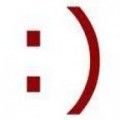colon

The colon has very specific uses in written English, and once you have understood the rules of the colon game, you are unlikely to be confused again! firstly, let’s go to the Google definition of the punctuation mark called the colon.
colon
noun
- a punctuation mark (:) indicating that a writer is introducing a quotation or a list of items OR
- that a writer is separating two clauses of which the second expands or illustrates the first.
- a statement of proportion between two numbers “a ratio of 10:1”
- the separation of hours from minutes (and minutes from seconds) in a statement of time given in numbers. “4:30 p.m.”
- the number of the chapter and verse respectively in biblical references. “Exodus 3:2”
Here’s a lengthy quote in praise of the way the colon is used in dictionaries by lexicographer Peter Sokolowski in the dictionary by Merriam-Webster:
“My favorite is a dictionary-specific mark of punctuation: the symbolic colon (which is a boldface colon) …This dictionary uses a boldface character recognizably distinct from the usual roman colon as a linking symbol between the main entry and a definition. It stands for an unexpressed simple predicate that may be read ‘is being here defined as (or by)’. It indicates that the supporting orientation immediately after the main entry is over and thus facilitates a visual jumping from word to definition.”
A colon should be used after an independent clause or statement in order to name one or several directly related ideas, such as a series of directions, a list, or a quotation or other comment illustrating or explaining the statement. For example: The colon is also used to separate chapter and verse from the bible
examples of colon usage in everyday written English.
“The daily newspaper contains four sections: news, sports, entertainment, and classified ads.”
“The strategies of corporatist industrial unionism have proven ineffective: compromises and concessions have left labor in a weakened position in the new “flexible” economy”.

Contemporary use of the colon can be found when they represent eyeballs in smiley faces!



















